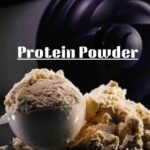Professional massage therapy is much more than just a way to relax your muscles — it’s a therapeutic approach rooted in science, designed to enhance both physical and mental well-being. Unlike a casual or spa massage, professional massage therapy is delivered with a clear purpose, by a trained and licensed therapist who tailors the treatment to address specific health concerns, using a range of evidence-based techniques.
Massage therapy in Chicago can be particularly helpful for individuals dealing with chronic pain, muscle recovery, injury rehabilitation, postural imbalances, migraines, or stress-induced tension. Techniques such as deep tissue massage, myofascial release, trigger point therapy, and Swedish massage are often employed, depending on the client’s needs.
At places like Copper Wellness, professional massage therapy is typically integrated with other treatments such as chiropractic care and acupuncture to create a holistic healing experience. Each session is individualized, with the therapist adjusting the pressure, focus areas, and pace according to your body’s needs, ensuring a personalized approach for both physical and mental relief. It’s a therapeutic experience delivered by someone who understands the body’s anatomy and the art of healing touch.
Techniques Used in Clinical Massage Therapy
In clinical massage settings, therapists utilize a wide range of techniques, each tailored to specific health conditions or injuries. These techniques go beyond simple relaxation, often forming part of a comprehensive treatment plan that might include physical therapy, chiropractic care, or medical interventions.
- Deep Tissue Massage: This technique targets the deeper layers of muscle and connective tissue, helping to release chronic tension and restore movement. It’s particularly beneficial for individuals with long-term pain or injuries.
- Trigger Point Therapy: This method focuses on muscle knots that cause referred pain in other areas. By applying sustained pressure to these points, therapists can reduce discomfort and enhance range of motion.
- Myofascial Release: This technique targets the fascia, the connective tissue that surrounds muscles. Gentle pressure is applied to release tightness and improve flexibility, especially useful after injuries or surgeries.
- Sports Massage: Combining deep tissue techniques with stretching and movement methods, sports massage helps support athletic performance, injury recovery, and overall muscle function.
Other methods like neuromuscular therapy, lymphatic drainage, and cross-fiber friction are also utilized, depending on the patient’s specific needs. These approaches are always applied with a focus on long-term recovery and improved function, rather than just temporary relief.
Pain Relief and Stress Reduction Through Massage Therapy
One of the unique benefits of professional massage therapy is its ability to address both physical pain and stress simultaneously. These two issues are often interconnected: stress can lead to muscle tension, and chronic pain can create ongoing mental strain. Massage therapy works by addressing both, offering relief for both the body and mind.
For pain relief, massage improves blood circulation, relaxes tight muscles, and enhances the range of motion. Techniques like deep tissue work or myofascial release are particularly effective for reducing stiffness and alleviating chronic tension. This is especially helpful for conditions like lower back pain, neck stiffness, tension headaches, and joint discomfort.
On the stress side, massage therapy calms the nervous system and induces the body’s natural relaxation response. As muscles relax and breathing slows, stress hormones like cortisol decrease, while feel-good chemicals such as serotonin and dopamine rise. This hormonal shift leads to improved mood, better sleep, and increased resilience to stress.
Regular massage sessions help break the cycle of pain and stress, providing the body with the opportunity to recover fully. It’s not just about short-term relief; it’s about creating a sustainable strategy to improve long-term health, manage discomfort, and promote a healthy mind-body balance.












